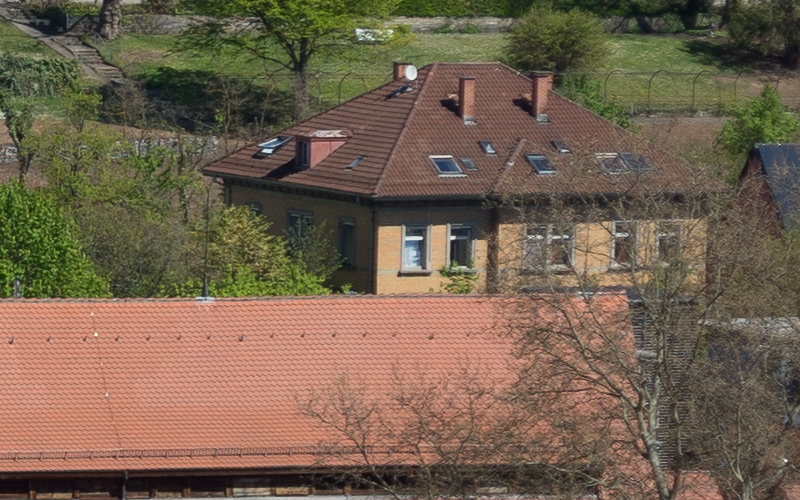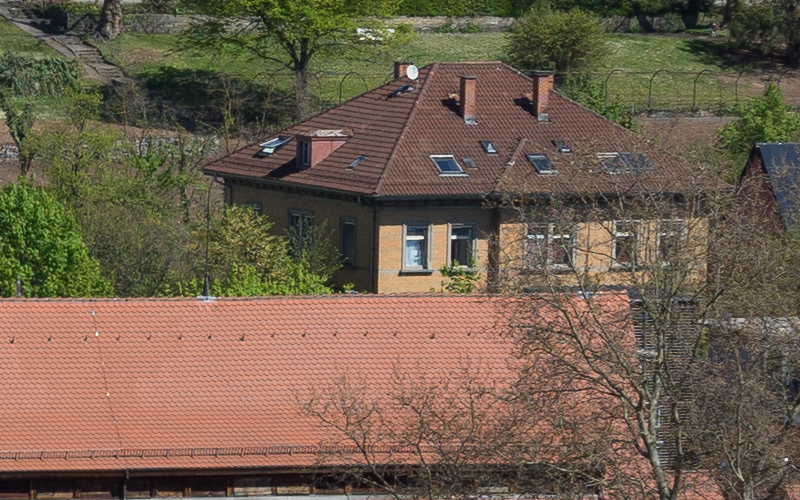
| Home | Gallery | Lenses | KnowHow | Legal Notice |  |
|
The foremost answer is because we can. The more sophisticated one is because we want to evaluate the optical quality of lenses. When we want to print big, the quality of the lens is important. Nothing is more disappointing than having taken a really good picture and you want to print big to hang it on your wall - and then you have to realize it won't work. False colors in the center, Edges are too soft and corners are smeared. That doesn't look well in your home. |
You will get a similar experience when you have to crop. If it's car race or bird photography, you are not able to get close enough, even with your monster telephoto lens. You have to crop. Now your lens is the deciding factor. Keeper or trash. So we zoom into the image look at the center, edges, corners and somewhere in the middle between center and corner. By the way, there are lenses out there which are sharper in the corners than in the middle! |
 Edge crop 1:1 f/4 |
 Edge crop 1:1 f/5.6 |
|
With a, lets say, standard display 27", 2560 pixel wide, about 110 dpi it's easy. We zoom in 1:1 often called 100%. We sit in front of our computer at a desk. We lean a little bit forth and back, so we don't see the pixel grid pattern any longer or mabye just a hunch of it. This is the best method to evaluate the sharpness and resolution of a lens. You will differentiate even very small differences. But you may sit on your desk with a big Retina display, or you may sit on your couch with an ipad which has e.g. 9.7" 2048 pixel wide, 264 dpi. That means a pixel is now very, very small. Your eyes are not longer in 1:1, 100% ratio. Look at the two images above. On my standard desktop display I can see a clear difference in sharpness and resolution. The left picture is cleary not that sharp compared to the right one. When I look at the two pictures on my ipad, I don't see any difference. Being not that sharp is, sort of, hidden by those small tiny pixels. |
As long as you don't print big or do heavy cropping it doesn't matter much. But when you want to, the only chance you have is zooming in. The question is how far? When you go in to much, everything is blurred and you cannot see the difference, again. Look at the pictures above. If you don't see a difference, start to zoom in. Let's say by 30%. Zoom in further with small 30% steps, till you can see clearly the difference. Very quick, you will notice when you are too far. The image on the right side is really sharp. When it gets blurry, you are too far and the difference between the two pictures starts to diminish. So zoom out again by one step. Now, you have an idea how much you should zoom in. I'm able to do that with my ipad. It works. I see the difference but the difference is not that big compared to my desktop display. You can do such stuff with an ipad, but when you want to get out most this device is not the best tool. Ipads have the tendency that everything will look great. For usual circumstances, this is not the worst thing, isn't it? |